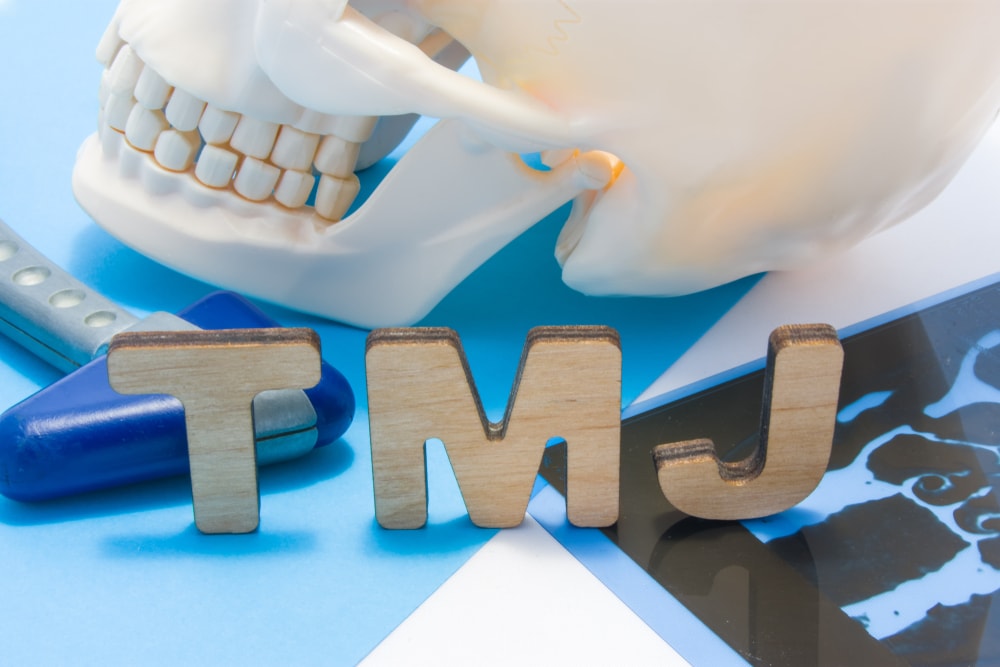TMJ stands for the temporomandibular joint which connects the jawbone to the skull. It acts like a sliding hinge, connecting a joint on each side of the jaw. The part of the bone that interacts with the joint is covered with cartilage and separated by a shock-absorbing disk to keep jaw movements smooth.

TMJ disorder occurs when the disk moves out of its proper alignment or the cartilage are damaged. Some common symptoms of TMJ syndrome are:
• Pain or tenderness in your jaw
• Difficulty opening and closing your mouth
• Pain in one or both of the TMJ joints
• Aching pain in and around your ears
• Difficulty chewing or pain while chewing
• Facial pain
• Clicking sound or grating sensation when moving your mouth
TMJ Syndrome Treatments
While some symptoms of TMJ disorders may go away without treatment, there are a variety of treatments available if symptoms persist. Your family dentist can recommend one or more of the following:
• pain relievers, anti-inflammatories, and muscle relaxants as a treatment for TMJ pain
• Oral splints or mouth guards
• Neuromuscular Orthotic
• Physical therapy including stretching and strengthening the jaw muscles
• Counselling to get to the root of behaviours that can irritate TMJ such as teeth clenching or grinding, leaning on your chin, or biting your fingernails
• Arthrocentesis – a procedure that involves small needles inserted into the joint to remove debris and inflammatory byproducts
• Corticosteroid injections
• TMJ arthroscopy surgery where a small thin tube is placed into the joint space, an arthroscope is then inserted, and small surgical instruments are used for surgery
• Modified condylotomy – a surgery on the mandible and not in the joint itself
• Open-joint surgery (arthrotomy) to repair or replace the joint
Criticisms of Current TMJ Syndrome Treatments
Although TMJ syndrome treatments can be effective for many patients, some of the cons associated with them are that most are painful, invasive, expensive, or simply do not work well.
With invasive surgery, possible complications can include injury of facial nerves, tissue damage, infections, or limited range of motion. If your dentist recommends surgery, be sure to discuss the risks and benefits, as well as other treatment options that are available to you.




